Complete Stainless Steel Welding Process, The Mechanic Must Know It!
 Nov 25,2022
Nov 25,2022

Welding is a process in which the materials of the work pieces to be welded (same or different) are combined by heating or pressure or both, and with or without filling materials, so that the materials of the work pieces can be bonded between atoms to form a permanent connection.
The stainless steel welded pipe is formed by rolling and welding stainless steel plates through several molds on the welded pipe forming machine. Due to the high strength of stainless steel, and its structure is a face-centered cubic lattice, it is easy to form work hardening. When the welded pipe is formed: on the one hand, the mold has to bear a large friction force, which makes the mold easy to wear; on the other hand, the stainless steel sheet It is easy to form a bond (occlusion) with the surface of the mold, causing strain on the welded pipe and the surface of the mold. Therefore, a good stainless steel forming mold must have extremely high wear resistance and anti-sticking (occlusion) performance. Tuofa CNC machining analysis of various advanced technology welded pipe molds shows that the surface treatment of such molds is treated with Super-hard metal carbide or nitride coatings
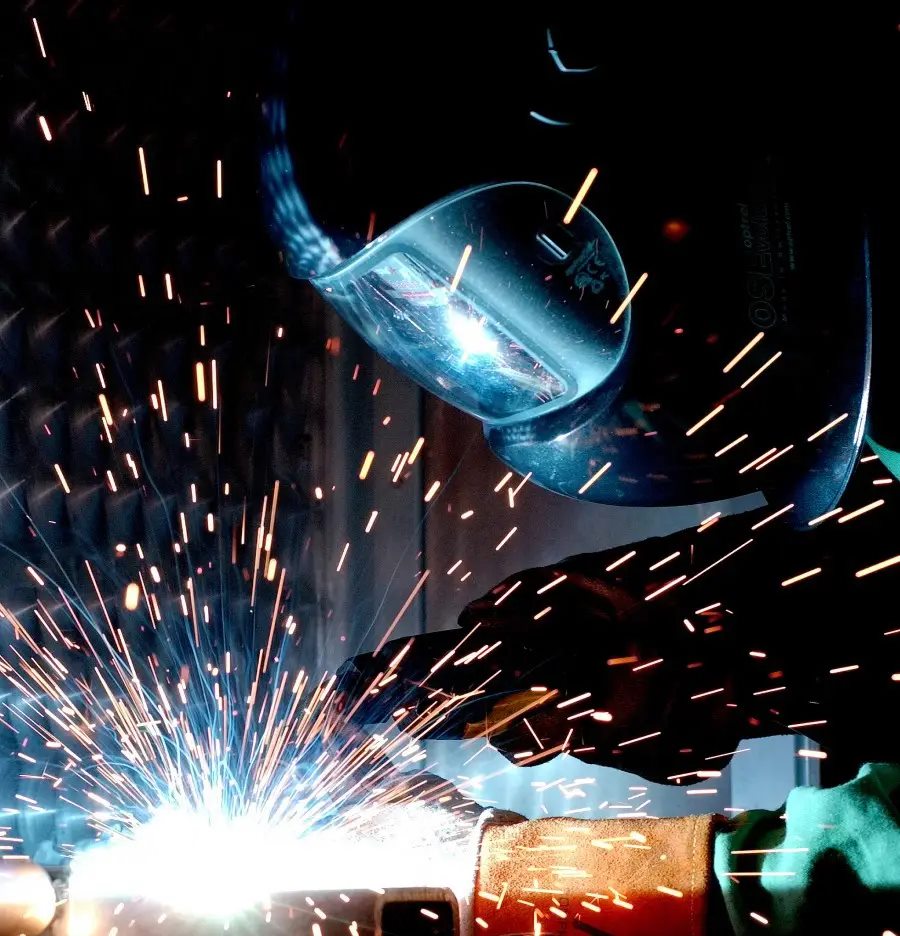
Technical points of stainless steel welding process
Compared with traditional fusion welding, laser welding and high-frequency welding have the characteristics of fast welding speed, high energy density and small heat input, so the heat-affected zone is narrow, the grain growth is small, the welding deformation is small, and the cold forming performance is good. It is easy to realize automatic welding, one-pass single-pass penetration of thick plates, and the most important feature is that I-groove butt welding does not require filler materials.
Welding technology is mainly applied to the metal base metal, commonly used arc welding, argon arc welding, CO2 shielded welding, oxygen-acetylene welding, laser welding, Electric fusion adhesive pressure welding, etc. Non-metallic materials such as plastics can also be welded. There are more than 40 metal welding methods, which are mainly divided into three categories: fusion welding, pressure welding and brazing.
Fusion welding
Fusion welding is a method in which the work piece interface is heated to a molten state during the welding process and the welding is completed without pressure. During fusion welding, the heat source will rapidly heat and melt the interface between the two work pieces to be welded to form a molten pool. The molten pool moves forward with the heat source, and forms a continuous weld after cooling to connect the two work pieces into one.
During the fusion welding process, if the atmosphere is in direct contact with the high-temperature molten pool, the oxygen in the atmosphere will oxidize the metal and various alloying elements. Nitrogen and water vapor in the atmosphere enter the molten pool, and defects such as pores, slag inclusions, and cracks will be formed in the weld during the subsequent cooling process, deteriorating the quality and performance of the weld.
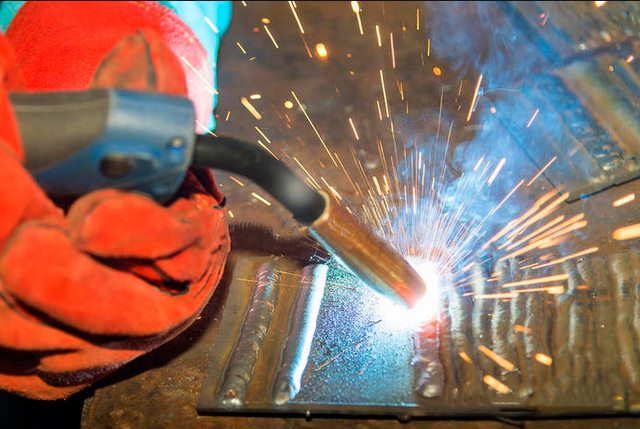
Pressure welding
Pressure welding is the atomic bonding of two work pieces in a solid state., also known as solid-state welding. The commonly used pressure welding process is resistance butt welding. When the current passes through the connecting end of the two work pieces, the temperature rises due to the large resistance. When heated to a plastic state, it is connected into one under the action of axial pressure.
The common feature of various pressure welding methods is that pressure is applied during welding without filling material. Most pressure welding methods such as diffusion welding, high-frequency welding, cold pressure welding, etc. do not have a melting process, so there is no problem of burning of beneficial alloy elements like fusion welding, and no problem of intrusion of harmful elements into the weld, thus simplifying the welding process and also Improved welding safety and hygiene conditions. At the same time, because the heating temperature is lower than that of fusion welding and the heating time is shorter, the heat-affected zone is small. Many materials that are difficult to weld by fusion welding can often be welded into high-quality joints with the same strength as the base metal by pressure welding.
Brazing
Brazing is to use a metal material with a lower melting point than the work piece as the solder, heat the work piece and the solder to a temperature higher than the melting point of the solder and lower than the melting point of the work piece, use liquid solder to wet the work piece, fill the interface gap and achieve Inter diffusion between atoms, so as to realize the welding method.
The seam that connects two connected bodies formed during welding is called a weld. The two sides of the weld will be subjected to welding heat during welding, and the micro structure and performance will change. This area is called the heat-affected zone. During welding, due to the difference in work piece material, welding material, welding current, etc., overheating, Embrittlement, hardening or softening may occur in the weld seam and heat-affected zone after welding, which also reduces the performance of the welding seam and deteriorates the weldability. This requires adjusting the welding conditions. Preheating the interface of the welding seam before welding, heat preservation during welding and heat treatment after welding can improve the welding quality of the welding seam.
Stainless steel pipe welding technology types
The welding process adopted: the use of small specifications can prevent inter granular corrosion, thermal cracks and deformation, and the welding current is 20% lower than that of low-carbon steel; in order to ensure stable arc combustion, DC reverse connection is adopted; short-arc welding arc closing is slow, Fill up the arc crater, and weld the surface in contact with the medium last; control the temperature between layers during multi-layer welding, and use forced cooling after welding; do not start arcs at places other than the groove, and the ground wire must be connected properly; deformation after welding is only Can be corrected by cold working.
1. TIG welding
When argon arc welding is used for stainless steel, due to the good protection, the alloy elements are not easy to burn, and the transition coefficient is high, so the weld is well formed, there is no slag shell, and the surface is smooth, so the welded joint has high heat resistance and good mechanical properties. At present, manual tungsten argon arc welding is widely used in argon arc welding, which is used to weld stainless steel sheets of 0.5~3mm. The composition of the welding wire is generally the same as that of the welding seam. The shielding gas is generally industrial pure argon. Be appropriately fast and try to avoid sideways swings. For stainless steel with a thickness greater than 3mm, MIG welding can be used. The advantages of MIGA welding are high productivity, small heat-affected zone of the weld, small deformation of the welding seam, good corrosion resistance, and easy automation.
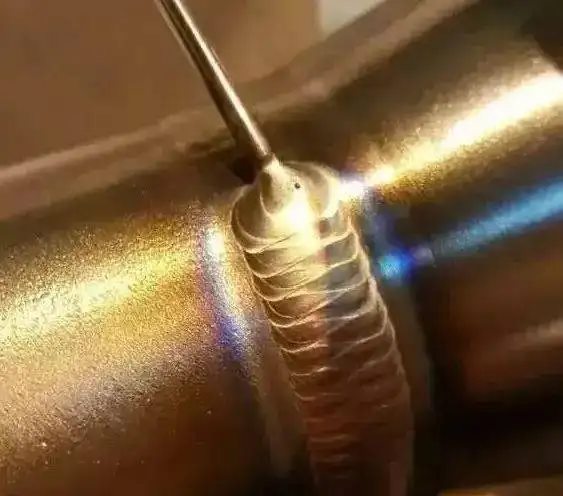
2. Gas welding
Because gas welding is convenient and flexible, it can weld welds in various spatial positions. For some stainless steel parts such as thin plate structures and thin-walled pipes, gas welding can sometimes be used if there is no corrosion resistance requirement. In order to prevent overheating, the welding tip is generally smaller than when welding low-carbon steel of the same thickness. The gas welding flame should use a neutral flame. The welding wire should be selected according to the composition and performance of the welding seam. When welding, the inclination angle between the torch tip and the welding seam is 40~50 degrees, the distance between the flame core and the molten pool should not be less than 2mm, the end of the welding wire is in contact with the molten pool, and moves along the weld with the flame, and the welding torch does not swing laterally , welding speed should be fast, and try to avoid interruption.
3. Submerged arc welding
Submerged arc welding is suitable for welding stainless steel plates (6~50mm) with medium thickness and above. Submerged arc welding has high productivity and good weld quality, but it is easy to cause segregation of alloy elements and impurities.
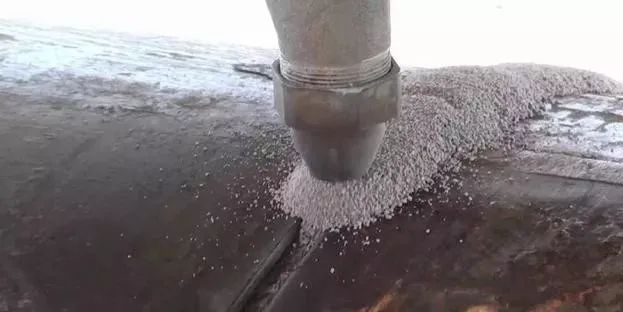
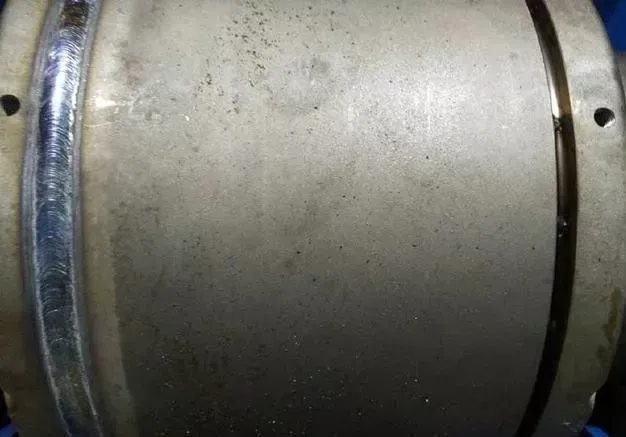
4. Manual welding
Manual welding is a very common and easy-to-use welding method. The length of the arc is adjusted by the human hand, which depends on the size of the gap between the electrode and the workpiece. At the same time, when used as an arc carrier, the electrode is also a welding seam filler material.
This welding method is very simple and can be used to weld almost all materials. For outdoor use, it has good adaptability, even underwater use is no problem. Most electric welding machines can TIG welding. In electrode welding, arc The length is determined by the human hand: when you change the gap between the electrode and the workpiece, you also change the length of the arc. In most cases, welding uses direct current, and the electrode acts as both the arc carrier and the weld filler material. The electrode It consists of alloy or non-alloy metal core wire and electrode coating. This layer of coating protects the weld from air and stabilizes the arc. It also causes the formation of a slag layer, which protects the weld and makes it shape. The electrode can be Titanium-type electrodes can also be sealed, which depends on the thickness and composition of the coating. Titanium-type electrodes are easy to weld, and the weld seam is flat and beautiful. In addition, the welding slag is easy to remove. If the electrode is stored for a long time, it must be re-baked. Because Moisture from the air can quickly build up in the electrode.
5. MIG/MAG welding
This is an automatic gas-shielded arc welding method. In this method, the arc is burnt between the current carrier wire and the workpiece under the shield of shielding gas. The wire fed by the machine acts as an electrode and melts under its own arc. Due to the versatility and specificity of the MIG/MAG welding method, it is still the most widely used welding method in the world. It is used for steel, non-alloy steel, low alloy steel and high alloy-based materials. This makes it Become an ideal welding method for production and repair. When welding steel, MAG can meet the requirements of thin-gauge steel plates with a thickness of only 0.6mm. The shielding gas used here is an active gas, such as carbon dioxide or a mixed gas. The only limitation is when performing When welding outdoors, the workpiece must be protected from moisture to maintain the effect of the gas.
6. TIG welding
The arc is generated between the refractory tungsten welding wire and the workpiece. The shielding gas used here is pure argon, and the feeding wire is not charged. The welding wire can be sent by hand or mechanically. There are also some special purposes that do not need to be fed. Welding wire. The material to be welded determines whether to use direct current or alternating current. When direct current is used, the tungsten electric welding wire is set as the negative pole. Because it has deep penetration ability, it is very suitable for different types of steel, but for weld The molten pool does not have any "cleaning action".
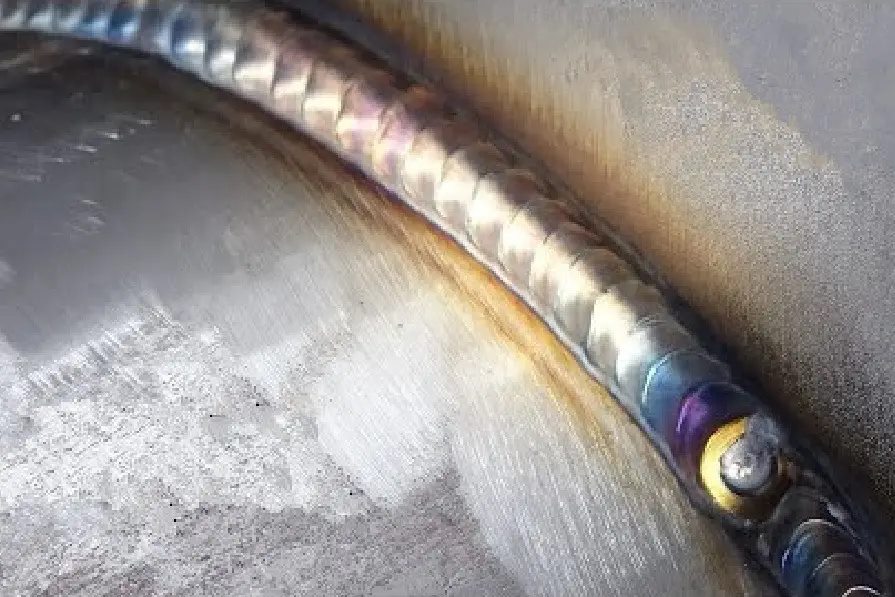
Stainless steel welding process inspection method
The content of welding inspection includes the inspection of materials, tools, equipment, process and finished product quality used in the whole production process from drawing design to product production. It is divided into three stages: inspection before welding, inspection during welding, and inspection after welding. Inspection of finished products. Inspection methods can be divided into two categories: destructive inspection and non-destructive inspection according to whether it causes damage to the product.
1. Inspection before welding
Pre-weld inspection includes inspection of raw materials (such as base metal, welding rod, flux, etc.), inspection of welding structure design, etc.
2. Inspection during welding
Including inspection of welding procedure specifications, inspection of weld size, inspection of fixture condition and structural assembly quality, etc.
3. Inspection of finished products after welding
There are many methods for post-welding finished product inspection, and the following are commonly used:
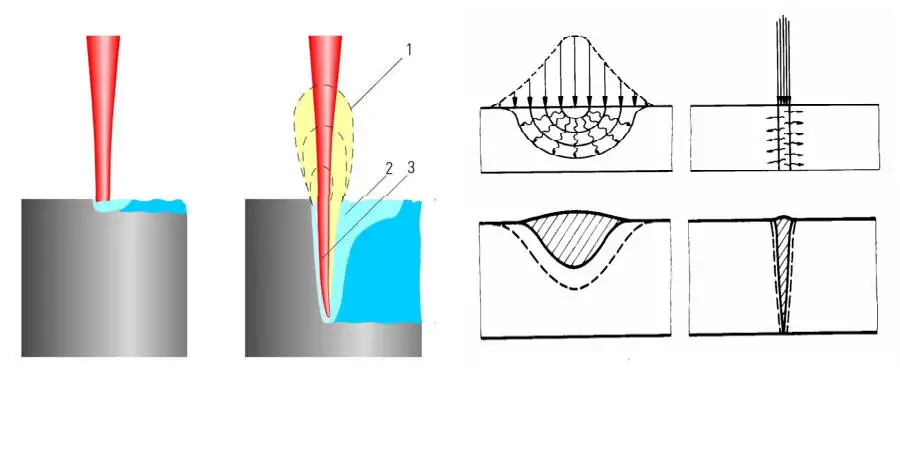
Visual inspection
The appearance inspection of welded joints is a simple and widely used inspection method. It is an important part of finished product inspection. It is mainly to find defects on the weld surface and dimensional deviations. Generally, it is inspected by naked eyes, with the help of standard templates, gauges, magnifying glasses and other tools. If there is a defect on the surface of the weld, there is a possibility of a defect inside the weld.
Compactness test
For welded containers storing liquid or gas, the non-dense defects of the welds, such as penetrating cracks, pores, slag inclusions, incomplete penetration and loose structures, etc., can be found by the tightness test. Tightness test methods include: kerosene test, water test, water flushing test, etc.
Strength test of pressure vessel
In addition to the tightness test, the pressure vessel shall also undergo a strength test. Commonly there are two kinds of hydrostatic test and air pressure test. They both inspect the tightness of welds in vessels and pipes operating under pressure. The pneumatic test is more sensitive and rapid than the hydraulic test, and the products after the test do not need to be drained, which is especially suitable for products with difficult drainage. However, the risk of the test is greater than that of the hydrostatic test. During the test, the corresponding safety technical measures must be followed to prevent accidents during the test.
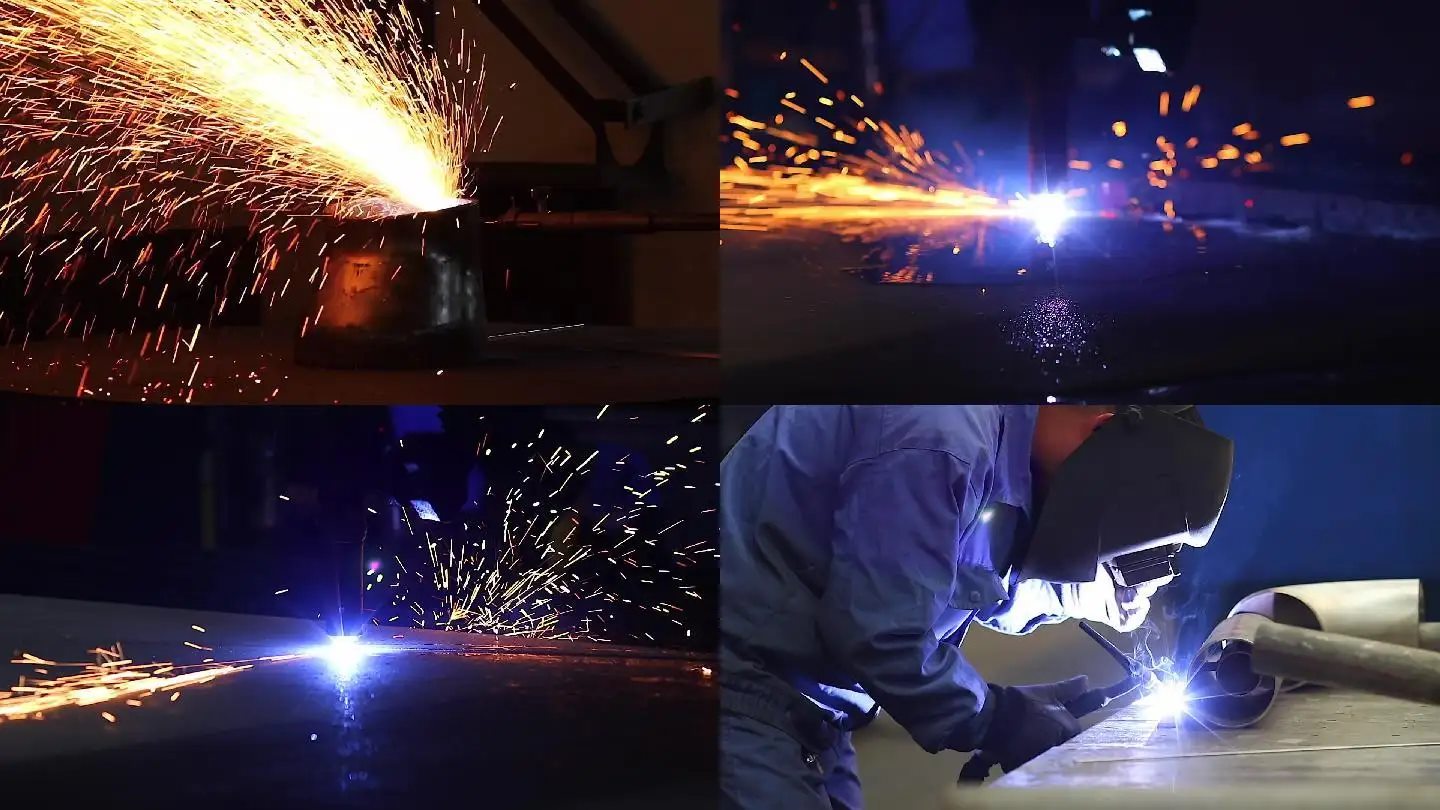
Physical method test
Physical inspection methods are methods that use some physical phenomena for measurement or inspection. The inspection of internal defects of materials or workpieces generally adopts the method of non-destructive testing. The current non-destructive testing includes ultrasonic testing, Radioactivity testing, permeability testing, magnetic testing, etc.
1. Radioactivity testing flaw detection
Radioactivity testing flaw detection is a flaw detection method that uses the properties of rays that can penetrate substances and have attenuation in substances to find defects. According to the different rays used in flaw detection, it can be divided into three types: X-ray flaw detection, γ-ray flaw detection, and high-energy ray flaw detection. Due to the different methods of displaying defects, each type of ray inspection is divided into ionization method, fluorescent screen observation method, photographic method and industrial television method. Radioactivity testing inspection is mainly used to inspect defects such as cracks, incomplete penetration, pores, and slag inclusions inside the weld.
2. Ultrasonic flaw detection
Ultrasonic waves can be used in the inspection of internal defects due to the reflection on the interface of different media in the propagation of metal and other homogeneous media. Ultrasound can inspect any weld seam material, any defect in any part, and can detect the defect position more sensitively, but it is difficult to determine the nature, shape and size of the defect. Therefore, ultrasonic flaw detection is often used in conjunction with Radioactivity testing inspection.
3. Magnetic inspection
Magnetic testing uses magnetic flux leakage generated by magnetizing ferromagnetic metal parts to find defects. According to the different methods of measuring magnetic flux leakage, it can be divided into magnetic powder method, magnetic induction method and magnetic recording method, among which the magnetic powder method is the most widely used.
Magnetic flaw detection can only find defects on the surface and near the surface of magnetic metals, and can only do quantitative analysis on defects, and the nature and depth of defects can only be estimated based on experience.
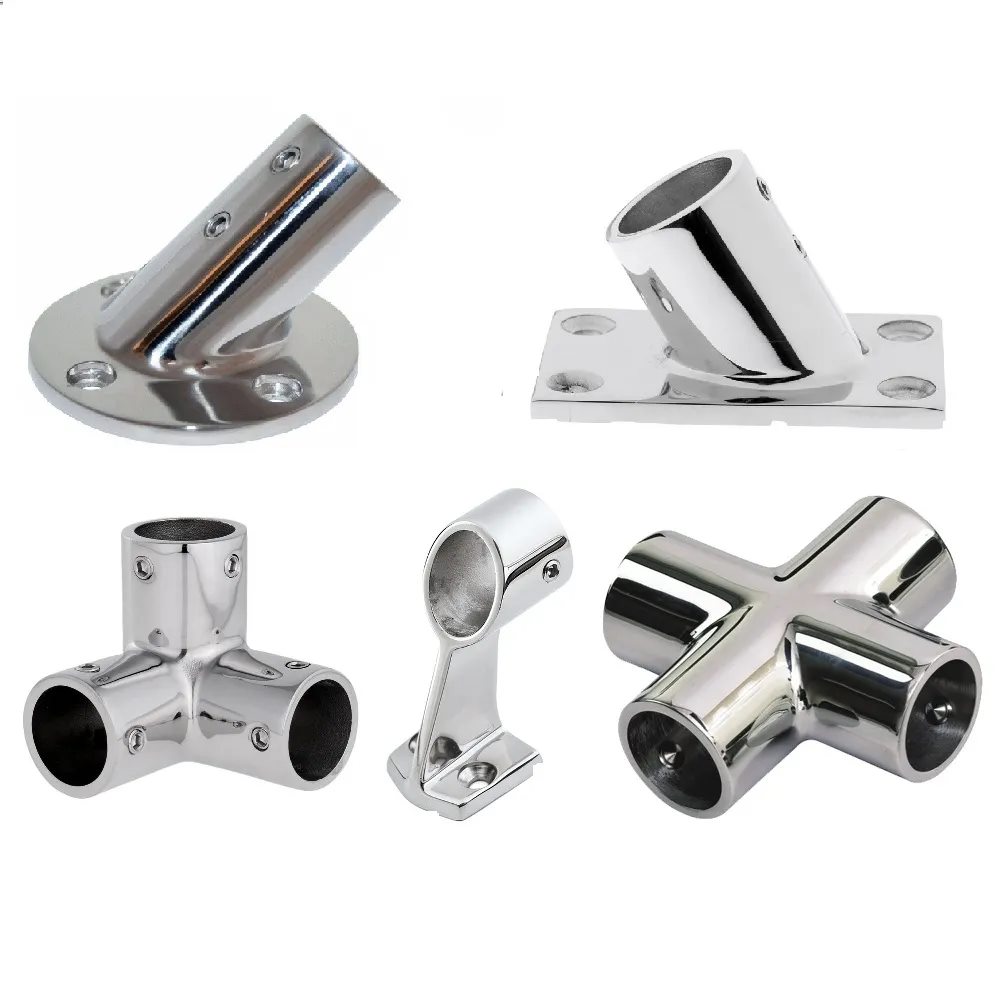
Test penetration
Penetrant inspection is to use the physical characteristics of certain liquids such as permeability to find and display defects, including coloring inspection and fluorescent flaw detection, which can be used to inspect the surface defects of ferromagnetic and non-ferromagnetic materials.
Key points and precautions for stainless steel welding
1. The power supply with vertical external characteristics is adopted, and the positive polarity is used for DC (the welding wire is connected to the negative pole)
2. Generally suitable for welding thin plates below 6mm, with the characteristics of beautiful weld shape and small welding deformation
3. The protective gas is argon with a purity of 99.99%. When the welding current is 50~150A, the flow rate of argon gas is 8~10L/min, when the current is 150~250A, the flow rate of argon gas is 12~15L/min.
4. The protruding length of the tungsten electrode from the gas nozzle is preferably 4~5mm. It is 2~3mm in places with poor shielding such as fillet welding, and it is 5~6mm in places where the slot is deep. The distance from the nozzle to the work is generally not more than 15mm.
5. In order to prevent the appearance of welding pores, if there is rust and oil stains on the welding parts, it must be cleaned.
6. The welding arc length is preferably 2~4mm when welding ordinary steel, and 1~3mm when welding stainless steel. If it is too long, the protection effect will not be good.
7. When butt bottoming, in order to prevent the back of the bottom weld bead from being oxidized, the back also needs to be protected by gas.
8. In order to make the argon gas well protect the welding pool and facilitate the welding operation, the center line of the tungsten electrode and the workpiece at the welding place should generally maintain an angle of 80~85 degrees, and the angle between the filler wire and the surface of the workpiece should be as small as possible. Generally around 10 degrees.
9. Windproof and ventilation. Where there is wind, please take measures to block the net, and take appropriate ventilation measures indoors.
|
Try Tuofa Now! Tuofa Engineer Support Team - Real human quotes are more accurate than software quotes |
Get a free quote |
Stainless steel welding operation requirements
Combining construction practices of multiple large-scale projects. Prepared construction organization design or construction plan including pipelines, storage tanks, tower containers, steel structures, etc. Through the implementation of these construction organization designs in the project, I have accumulated some experience and gained a better understanding of the welding of stainless steel. Combined with pipeline construction. Tuofa CNC machining is aimed at the technical management and quality control of stainless steel in welding, let's talk about some experience.
1. Determine the welding process
There are many grades of stainless steel. According to the alloy composition, it can be divided into chromium stainless steel and chromium-nickel stainless steel. According to the metal structure of stainless steel, it can be divided into Austenitic type, ferrite type, martensite type and so on. The most commonly used in construction is austenitic type, such as: 0Crl9Ni9, 1Crl8Ni9Ti and so on. Austenitic stainless steel has better weldability and is relatively easy to weld, and the welded joint has high toughness even in the welded state. However, compared with ordinary carbon steel, its thermal conductivity is about 1/3 of carbon steel, and its expansion coefficient is 1.5 times larger than that of carbon steel. Due to the low thermal conductivity and high expansion coefficient of austenitic stainless steel, large deformation and strain will occur during the welding process. Therefore, the welding quality mainly depends on whether the welding process is compatible with the base metal. For this reason, when determining the welding process, the following aspects must be considered.
Selection of welding methods Common welding methods for stainless steel include manual arc welding, gas shielded welding and automatic submerged arc welding. It is mainly determined according to the designed medium parameters, construction conditions and operating environment, and construction costs. In the construction of process pipelines, due to the different diameters of the pipes and the large number of valves and fittings on the pipelines, the position of the welding joints changes more complicated. Therefore, manual arc welding is generally used. For pipelines conveying flammable, explosive or media with certain cleanliness requirements, argon arc welding is usually used for priming. Manual arc welding is used to cover the surface to improve the internal quality of the weld. Selection of welding materials Stainless steel electrodes are divided into chromium stainless steel electrodes (the brand is prefixed with "G") and chrome-nickel stainless steel electrodes (the brand is prefixed with "A"). Chromium stainless steel electrodes are mainly used for welding martensitic stainless steel. The selection of welding rods is mainly considered from the chemical composition of the base metal, the temperature and pressure of the pipeline medium, the current of the welding machine (AC or DC), the welding method, and the ambient temperature during welding. Generally speaking, through selection and confirmation, there will be multiple brands of electrodes that can meet the welding requirements. At this time, you can choose the best one according to the cost performance of the electrode.
The selection design unit of the weld groove form is usually based on the force of the weld. Indicate the groove form in the construction drawing to adopt the corresponding norms or standards. However, the commonly used specifications or standards do not subdivide the groove size according to the difference between the base metal and the welding consumables. It is only determined according to the thickness of the base metal and the welding method. But in fact, different base metals and welding consumables have different requirements on the groove size during welding. This is because the chemical composition and physical properties of the material are different, and the penetration (penetration depth) of the welding is also different. Therefore, during construction, it is necessary to adjust the gap between the grooves, the blunt edge, and the angle of the groove according to the specific material. If the groove size is too large, it will not only increase the construction cost, but also cause the weld seam to be over stressed, easily deformed and crack; while the groove size is too small, it is prone to quality defects such as incomplete penetration and slag inclusion. When manual arc welding is used for operations, stainless steel has less penetration than carbon steel electrodes. Therefore, the groove angle and the gap between the two sides should be appropriately increased. It can be controlled according to the positive deviation value given in the specification, or determined by trial welding.
Selection of welding current The specific resistance of austenitic stainless steel is nearly 5 times larger than that of carbon steel. Therefore, the electrode is easy to overheat and burn red when welding. However, the use of high current will cause overheating of the electrode and burning of the active ingredients in the coating, which will easily cause defects due to poor weld protection. At the same time, the expected weld metal composition cannot be obtained, so the welding current should not be too large. Generally, it is advisable to use a smaller welding current.
2. Fully prepare for welding
Before welding work. Make targeted preparations. This preparation is an important part of ensuring the quality of the weld. Its content is mainly considered from the following three aspects:
Confirmation of Welding Operator Skills Welders engaged in welding operations must hold a certificate to work, and must strictly follow the permitted welding items indicated on the operation certificate. Welders preferably have more than two years of experience in welding stainless steel or chrome-molybdenum steel. Management of welding materials Before use, welding rods should be baked according to the regulations in the instruction manual (if there is no regulation, it is generally processed according to the drying temperature of 150-200°C and the drying time of 1h). Baking must use a special oven with temperature control. You can bake as much as you want, and you can take it as you use it. The dried electrodes should be used in the insulation cylinder. If exposed for more than 2 hours, it should be re-baked. Repeat should not exceed 3 times. The groove of stainless steel pipe can be machined or plasma cut before welding. The oxide layer and burrs at the groove should be removed first. In order to facilitate the removal of spatter after welding, it is possible to paint chalk slurry on both sides of the weld within 50mm, and then remove it after welding. Since the contact between stainless steel and carbon steel will produce & quot; carburization & quot;, special grinding wheels and stainless steel brushes must be used to clean the weld bead and splash.
3. Prevent deformation and cracks
Prevention of deformation Due to the large expansion coefficient and small thermal conductivity of austenitic stainless steel, large welding deformation is prone to occur when stainless steel is welded. Therefore, when assembling, different types of anti-deformation fixtures should be used according to the welds at different positions, and the positions of tack welding and fixed welding should be smaller than that of ordinary carbon steel. When welding personnel, the welding sequence should be reasonably determined. For example, if the pipe diameter is large, two people can weld symmetrically in the same direction at the same time. When the base metal is greater than 8mm thick. The weld bead should be welded in multiple layers and welded with small input energy. Welding adopts the & quot; reverse connection & quot; method in which the weldment is connected to the negative electrode to reduce the temperature of the weldment.
Prevent cracks: After the welding rod is baked, it should be packed in a heat preservation tube. The temperature of the welding environment should be above 0°C, and it should not fluctuate greatly during the welding process. When the temperature is lower than 0 ℃. Welding should be preheated, the preheating temperature is 80 ~ 100 ℃. The arc is struck in the slope 13 by the backward method, and the arc must not be struck on the base material. The transport bar adopts the straight line transport method of pulling forward and not swinging. If lateral swing is necessary during vertical welding, the swing range should be reduced as much as possible. Excessive lateral swing is likely to cause thermal cracks and poor protection. The arc length should be kept as short as possible. A long arc will not only cause the burning of alloy components, but also may cause hot cracks due to the reduction of ferrite caused by the intrusion of nitrogen in the air. The arc crater should be filled up when the arc is closed. Especially in tack welding, it is easier to neglect to fill the arc crater, and it is difficult to avoid the occurrence of thermal cracks in the sunken arc crater.
| Let's Start A New Project Today |
| Get a Free Quote |
Summarize
Because of its professional characteristics and special process, welding has discouraged many customers. Tuofa's professional welding team is willing to provide you with the best welding solutions and become your best partner!
Driven by faith, survive by ability
Tuofa not only provides stainless steel welding services, but also provides CNC machining, 3D printing, project design and production of metal manufacturing.
Get your next quarterly order ready - get 15% off.
Get the design you want - contact now info@tuofa-cncmachining.com.
 Tel/WeChat:
Tel/WeChat:  Email:
Email: 
 Home
Home
 High-strength Bolts VS Ordinary Bolts, The Strictest Manufacturing Process
High-strength Bolts VS Ordinary Bolts, The Strictest Manufacturing Process 







